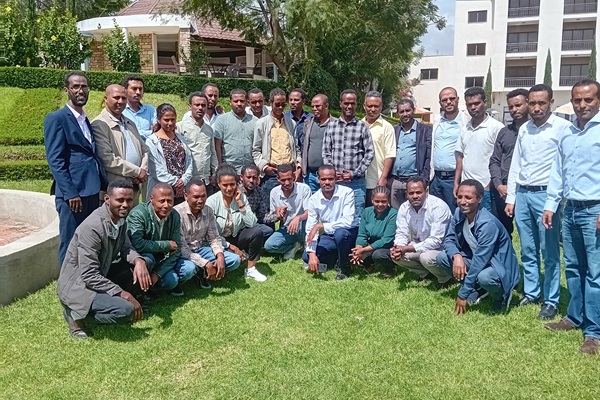 Ethiopia
Ethiopia
Latest news related to Ethiopia

Agreement to support the Irrigation management information system for Ethiopia (IMISET)
11/01/2024
Last November, the Food and Agriculture Organization of the United Nations (FAO) signed an agreement with the Ministry of Agriculture (MoA) of Ethiopia to support the Irrigation management information system (IMISET) in the country.
IMISET is a web-based information system run by the Min...

Training on the integration of WaPOR and IMISET
07/12/2023
The International Water Management Institute (IWMI), in collaboration with the FAO and the Ministry of Agriculture (MoA) in Ethiopia, recently introduced the WaPOR tool during 2-day (December 5 to 7) training event at the ILRI campus in Addis Ababa. This is a step in the of an effort carried b...

Water Accounting + trainings in Ethiopia
22/11/2023

Data validation training in Adama, Ethiopia
15/11/2023
In November 2023, IHE Delft organized an WaPOR data validation training in Adama town near Adis Ababa, bringing together 27 participants from diverse backgrounds. This inclusive group represented government organizations, research institutes, universities, regional offices, and private sectors...
Resources and links
About Ethiopia
Located in the Horn of Africa, Ethiopia has an area of 1.1 million square kilometres and a population of about 11.5 million. It has an annual internal renewable surface water flow of about 122 billion cubic metres. However, the exact amount of water withdrawn for various purposes is still not known, so a better understanding of the country's water flows into the economy is needed.
Agriculture in Ethiopia is predominantly rainfed and is being acutely affected by climate change and is unable to meet the increasing demand for food for the ever-growing population, as well as the supply of raw materials for the expanding agro-processing industry. Ethiopia has an irrigation potential of about 11.1 million hectares of land, but only about 15-20 per cent of this is predominantly developed with surface irrigation systems. Irrigation performance, especially water productivity (WP), has not been assessed in the country, but some studies suggest that it is very low. The main challenge is that there is a lack of informed decision-making, planning and management of irrigation systems, and irrigation is managed with already established management practises, resulting in low water productivity, water wastage and land degradation/salinization as well as social conflicts.
Project milestones:
July 2022: WaPOR phase 2 inception workshop
February 2022: WaPOR introductory training
Pilot areas are yet to be identified.
WaPOR partnerships in Ethiopia

© FAO/Petterik Wiggers
